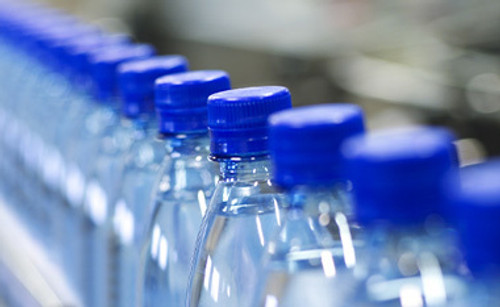Turbidity in water treatment is critically needed as it is the most visible form of contamination. There are many sources that require turbidity removal for their intended applications. For example, treated wastewater and surface water are common sources used for a multitude of different applications; however, these sources are generally filled with visible contaminants that can negatively affect the application and must be removed. Increased levels of turbidity can facilitate microbial growth which leads to unhealthy water. Paying attention to turbidity levels and taking it into consideration enables the following processes to run smoothly and efficiently, whether it be an RO system, irrigation, or even drinking water purposes. A turbidity monitor that will alert the customer when the turbidity levels have reached an undesirable level is available upon request. This feature can prevent internal damage from occurring and ensure optimal permeate quality.
Water treatment systems that we offer to decrease turbidity levels are Media Filters and Ultrafiltration Systems. These systems are the ideal solutions for reducing turbidity since they filter suspended particles that contribute to the different degrees of turbidity. The analogy of a sift can be used to describe the essential difference of Media and Ultrafiltration Systems. Media filtration systems sift the suspended solids out of the water. While Ultrafiltration systems sift out suspended solids; and additionally, filter out some bacteria & viruses as well.
In order to recommend and quote an appropriate system, Pure Aqua representatives suggest submitting a water analysis for the feed source.
[custom-specifications]
Turbidity in water treatment is an important factor and a common indicator of water quality. Turbidity refers to how clear or cloudy water is depending on the amounts of contaminants like suspended solids, organic matter, dirt, clay, and grit; and is typically measured in NTUs (Nephelometric turbidity units) while some companies like to refer to it as SDIs (Silt Density Index). The contaminants responsible for turbidity surround multiple surface water sources like wells, rivers, lakes, and sometimes seawater. Color change also falls under turbidity which occurs from the presence of heavy metals like iron that can cause the water to turn yellow and orange. Targeting the removal of turbidity in water treatment inherently improves the quality of the water.
[/custom-specifications]
[custom-features]
Media Filter: Media filters are designed to filter bad odor, taste, color, and lower turbidity. This is the conventional applied solution for turbidity. After 2-3 years, reapplication of media may be necessary due to the overtime reduction from regular backwashing. These filters are recommended to be replaced after 4-5 years.
Ultrafiltration System: UF Systems are designed to remove suspended solids to reduce turbidity levels and also filter finer particles like bacteria and viruses (i.e. turbidity in water treatment). through a pressure driven membrane separation process. UF systems are well known for their impeccable filtration by filtering up to 5 microns.
Related Projects:
- Ultra Filtration Systems 3 x 20 GPM - Philippines
- Industrial Multi Media Filters 196 GPM - Saudi Arabia
- Filtration System 202,900 GPD - Venezuela
[/custom-features]
[custom-usage]
Media Filtration System:
- Automatic Backwash valve/Longevity: The automatic back-washing control feature of media filters preserves the longevity of the system and guarantees consistent optimum performance. This feature enables our media filters to last around 3 times longer than regular filters.
- Inexpensive (one-time purchase): Media filters are cost-efficient and do not require any reoccurring cost of consumables.
- Optimal result due to medium combination: Our Multi-Media filters intentionally include a combination of mediums that complement each other for a more efficient filtration of suspended solids. Generally, these filters do not use chemicals. Depending on the application, if necessary, a chemical dosing system can be integrated.
Ultrafiltration System:
- Removes higher levels of Turbidity: This system is more advanced and is able to filter out more turbid water than Media Filters.
- Removes bacteria & viruses: UF systems have the capacity to filter fine particles, suspended solids (including silt & colloids), and organic matter.
- Backwash Pump: UF systems come with installed backwash pumps that will ensure periodical flushing to prevent the membrane from fouling.
- Online Turbidity Monitor: Our UF system comes with an online turbidity monitor to help keep track of the turbidity levels and prevent spontaneous failure. Troubleshooting support is also offered with monitor integration
[/custom-usage]
[custom-documents]
[/custom-documents]
-
Quality content
Explains the process of turbidity in water treatment very well
 ENGLISH
ENGLISH
 ESPAÑOL
ESPAÑOL ???????
??????? PORTUGUÉS
PORTUGUÉS FRANÇAIS
FRANÇAIS













